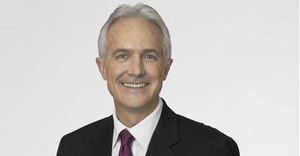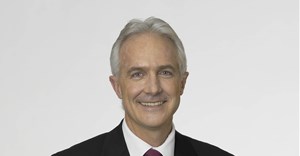Trending
Budget 2017: Only growth can balance the books

Further, Budget 2017 is expected to show little, if any, slippage in the key budget deficit and government debt ratios for 2016/17 and over the medium term. The consolidated government spending ratio is excessive at 33% of GDP, but the Treasury’s track record in containing expenditure has improved in recent years. Indeed, non-interest spending per capita has remained just about unchanged since fiscal year 2011/12 after adjusting for inflation.
Considering these developments it is fair to argue some of the key building blocks are falling into place to return South Africa to fiscal sustainability.
Tepid growth poses risks
Even so, the risk to fiscal sustainability is material. The impact of tepid economic growth on government revenue is well documented. But, low growth is not the only culprit. Government’s high spending ratio reflects the legacy of strong wage and consumption spending growth in 2009 and 2010. And, although government consumption has stabilised at just over 20% of GDP, there is no sign of a decline.
Revenue growth has exceeded nominal GDP growth by a wide margin in recent years. Tax buoyancy (government revenue growth relative to income growth) was 1.46 and 1.47 in 2014/15 and 2015/16 respectively, before declining to 1.07 in 2016/17 at which point the lack of GDP growth hit home, prompting the Treasury to announce its intention of introducing substantial revenue raising measures in the next two fiscal years.
Offshore assets are Treasury’s ace
At least, in addition to the implementation of measures to protect the corporate income tax base, an ace the Treasury has at its disposal is the expected proceeds from the voluntary declaration of its offshore assets programme, which could net in excess of R10 billion. Assuming this is unlikely to be included in government’s revenue projections for tax year 2016/17, it could cause upside surprises in revenue collection or ease the pressure to increase tax rates next year. That said the programme represents a once-off bonanza only.
R51 billion is still needed over the coming year
Hence, additional spending cuts and revenue increases adding up to R51 billion and R43 billion respectively over the next two fiscal years relative to original baseline projections are still required to stabilise the government’s debt ratio at around 53% of GDP by 2018/19. It is disconcerting that cumulative tax increases and expenditure cuts amounting to R154 billion between 2015/16 and 2018/19 can do no more than stabilise the debt ratio, let alone reduce it meaningfully.
We need to tackle debt
Debt stabilisation is critical since the consolidated fiscal data shows the rising debt level has resulted in a sharp increase in Main Budget interest payments from R54.3 billion in 2008/09 when the debt ratio was just 28.9% of GDP (March 2009) to an estimated R147.7 billion in 2016/17 with a debt ratio of 50.9% of GDP (at end September 2016). To put this figure into perspective, interest payments currently amount to almost the entire consolidated government health care budget, which is estimated at R169.3 billion in the current fiscal year.
A government debt ratio at a shade more than 50% of GDP is just about in line with the IMF’s average estimate of 49.1% of GDP for all emerging market and middle-income economies for 2017. The problem is the real interest rate on government debt is relatively high, which to a significant extent reflects South Africa’s deteriorating sovereign debt rating. Given an elevated real interest rate on new government borrowing relative to the currently low level of potential real GDP growth, even a moderate debt ratio of 50% of GDP implies South Africa must continuously run a primary budget surplus (of at least 0.5% to 1% of GDP) to prevent unsustainable, persistent increases in the debt ratio in the long run. The problem is this allows no room for a downturn in economic activity.
How would a Budget for growth look?
Accordingly, the National Budget should be designed to promote economic growth. But, what would a Budget designed to support growth look like? Ideally, to minimise damage to the economy, fiscal consolidation should be focused on cutting expenditure while leaning towards relatively more capital expenditure (including human capital) and protecting the government’s balance sheet.
On the revenue side, the tax structure should be aligned to promote savings and investment. South Africa’s dearth of domestic savings is its Achilles heel. In the absence of sufficient foreign savings inflows, it limits investment spending and therefore job creation.
Taxes on consumption support the savings objective, while taxes on income are a disincentive to work and invest. In an ideal world, therefore, the appropriate response would be to favour taxes on consumption relative to taxes on income. In practice, this would imply complementing the South African government’s promotion of tax-free savings accounts with higher taxes on goods and services by hiking the VAT rate.
The tricky case of a VAT rate rise
The case for a VAT rate increase is also supported by the observation that South Africa’s VAT rate is relatively low compared with other developed and developing economies, while its personal and company income tax rates are relatively high. This point is illustrated by the National Treasury in its 2016 Budget Review. A 1% increase in the VAT rate, for example, would support the savings objective and net in the region of R20 billion (most of the R28 billion increase sought by the National Treasury for the upcoming tax year).
But, the tax system must promote fairness. VAT is recognised as a regressive tax. Still, given exclusions and the zero-rating of specific items, South Africa’s VAT is, arguably, only modestly regressive. Ultimately, though, a VAT rate increase is unlikely to be palatable to all stakeholders and the National Treasury appears set to resort to a range of other tax increases to make up the difference. The introduction of a “sugar tax”, further increases in the general fuel levy (each 10c per litre increase should net some R2.25 billion) and adjustments to sin taxes (possibly in excess of merely compensating for inflation) are all possibilities.
Wealth taxes are discouraging saving
But, given increasing recognition of the bias of the current global economic system towards greater income inequality and wealth disparity, emphasis may fall on wealth taxes. Still, wealth (or capital) reflects the accumulation of savings. Therefore, taxes on capital gains and the income streams generated by wealth, including taxes on dividends and interest, are nothing other than a tax on savings. This lowers the return on savings, which is counter-productive considering South Africa’s palpably low domestic savings ratio.
Higher personal income tax is prohibitive
Further, increases in personal income taxes are also expected to feature prominently. Theoretically, taxes on income discourage work, savings, and investment and are therefore not supportive of the growth objective. Nonetheless, in the absence of a VAT rate hike, the Minister is likely to resort to an increase in, at least, the marginal tax rate for high-income earners in keeping with fairness and a progressive tax system. Note, however, if the marginal tax rates for lower income earners are left unchanged, the Minister may not adjust lower personal income tax brackets to fully compensate taxpayers for fiscal drag.
But, there are limits to increasing tax rates. South Africa’s largest revenue sources are VAT (despite its relatively low rate), personal income tax and company income tax. Already, current taxes on income and wealth of households and non-profit institutions serving households amounted to 16.1% of households’ gross disposable income, which is higher than the 14.9% of gross disposable income recorded in 1995 before Trevor Manuel began cutting individual tax rates. And, an increase in the company tax rate would lower the user cost of capital, crimping much needed fixed investment spending further.
In the end, growth is what’s desperately needed
In the end, only sustained firmer economic growth can make the fiscal numbers add up. No amount of fiscal consolidation can compensate for this, which speaks to the importance of implementing economic reform measures already announced by government – a point not lost on sovereign debt rating agencies.















